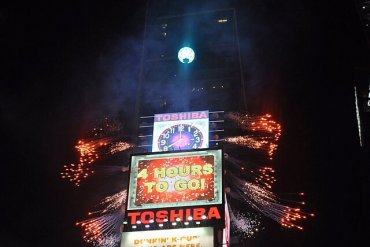
Why Do We Shake the Lulav and Other Arba Minim on Sukkot?
This week I’m going to do something different. I’m going take two questions that were submitted separately and combine them into a single post because (a) they’re related and (b) my answers are relatively brief.
The first question is:
Dear Jew in the City,
“Why do we shake the lulav and other arba minim on Sukkot?”
Sincerely,
Jacob
Dear Jacob
“Arba minim” means “four species.” We colloquially say “lulav and esrog” (or etrog, i.e., the palm branch and the citron), but we wave two more species, the hadassim and aravos (myrtle and willow).
Now, if you ever ask me why we perform a Biblical mitzvah, if the Torah doesn’t give a reason (which it rarely does), my answer is always going to be the same: Because God told us to. The Rambam writes, “If we knew the reasons underlying all the mitzvos, we would find excuses to do away with all of them… saying, ‘God only commanded one thing and prohibited another because of such-and-such reason, therefore we will safeguard the reason and not have to do the mitzvah….’ This is why God did not reveal the reason behind most mitzvos…” (Sefer HaMitzvos, Negative Mitzvah #365).
So while we don’t definitively know the reasons for most mitzvos, we can speculate and we derive lessons from the mitzvos. But make no mistake: the lessons are things that humans projected onto the mitzvos and they do not necessarily reflect God’s thought process in the matter.
Last week, we discussed how Succos is a harvest festival and a time of great joy. Regarding the arba minim, the Sefer HaChinuch tells us that waving the arba minim gives us a physical activity to remind us that the joy of Succos is because of God. The mitzvah focuses us on the fact that it is God Who has given us all the good things for which we are celebrating. (In this, the arba minim on Succos are analogous to a Seder on Passover.)
Which brings us to the second question, which is:
Dear Jew in the City,
“What do the arba minim represent?”
Sincererly,
Sasha
Dear Sasha,
I wonder about this question because if you don’t already know what the arba minim represent, why assume they represent anything at all? Luckily, they do represent something, so we have what to talk about!
There are two common explanations for the symbolism of the arba minim, both found in Vayikra Rabbah (30:12 and 30:14, though I’m going to give you the second one first).
Rabbi Manei quotes Psalms 35:10, which describes all of a person’s bodily parts praising God. He then says that this verse refers to the arba minim, each of which is similar to a human limb or organ. The lulav resembles the spine, the hadassim resemble the eyes, the aravos resemble the mouth and the esrog resembles the heart. These are the seminal body parts, we are told, as each of them is comparable in some way to an entire body. Accordingly, the arba minim represent the organs with which we serve Hashem and praise Him.
The other explanation is that each of the four species represents a different type of Jew. The esrog has both a taste and a smell; this is emblematic of Jews who have both Torah study and mitzvah performance. The lulav has taste but not smell, representing those who have Torah study but not mitzvah performance. The hadassim have smell but no taste, representing those who have mitzvos but not Torah. Finally, the aravos have neither taste nor smell, just as some Jews have neither Torah nor mitzvos. And what do we do with the arba minim? We take them all together in a single grouping so that each can help to compensate for the shortcomings of the other.
(I’d like to point out that when we take the arba minim, the esrog – which has both taste and smell – is held directly next to the aravos, which have neither. Similarly, Jews who have both Torah and mitzvos should take advantage of opportunities to get closer to those who have neither.)
Again, remember that the ultimate reason we take the arba minim is because God told us to, and He knows what’s spiritually good for us even if we don’t understand how such things work. These symbolic representations of the arba minim are good lessons for us to keep in mind, but any role they might play in the “reason” for the mitzvah is purely speculative.
Sincerely,
Rabbi Jack Abramowitz
Educational Correspondent
Follow Ask Rabbi Jack on YouTube
Image Credit: Chabad.org
If you found this content meaningful and want to help further our mission through our Keter, Makom, and Tikun branches, please consider becoming a Change Maker today.







